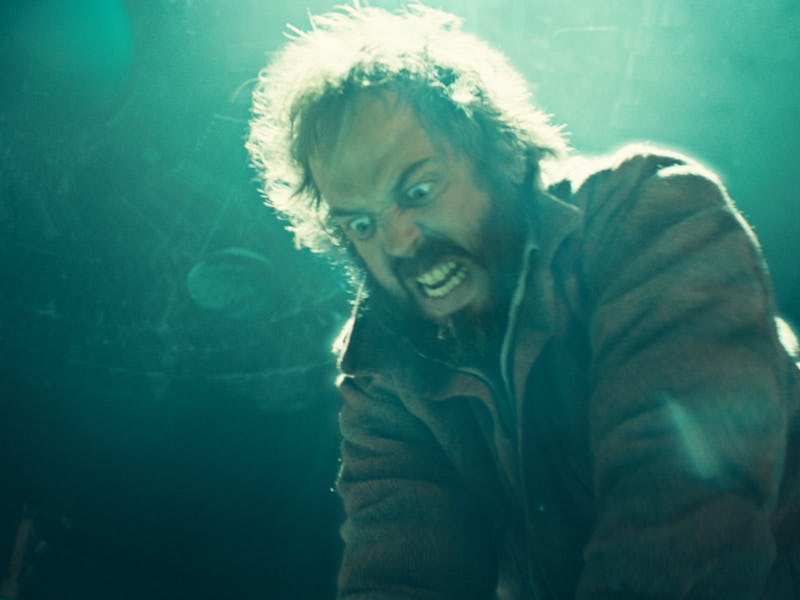'Fargo' Season 2 and Its Flying Saucer
Why we won't and shouldn't ever understand the UFO in 'Fargo.'

Funny how a shootout on a “serious” TV show now recalls True Detective immediately. The high drama with which Fargo’s shootouts are introduced — first season on down — is similarly dramatic, if not more, to the faceoffs on the HBO show’s first season. It’s not just that Fargo’s scenes also capture every real-time detail in gory, hyperventilation-filled detail, use grand dramatic camera choreography, and integrate moments of stylized slo mo. It’s how dramatic the lead-up is: the Gerhardt’s cars rolling in, the cops asleep in their beds, and Solverson’s gnawing doubt and growing desperation as the sense that “something’s not right” creeps up on him.
But like True Detective Season 1 devolved into rumination on the inexplicable and the cosmic, Fargo seems always to be obsessed with it, as much as the drama at hand. It’s studded as it is with snippets of riddles and poetry, ironically-pregnant-with-meaning music and television clips, and now, again, the mysterious UFO that doffed its cap in the first episode.
Guys, I can tell you (and Patrick Wilson backed up the claim to Variety today): We’re not going to get a straight answer about that spacecraft. It’s a fun dramatic device, weirding up the show with vague symbolic import.
There’s something unexplainable in people and the world that makes events spiral out of any control — that makes Hanzee betray everyone he spent his life working for, that makes convergences like Kansas City, the cops, the Blomquists, and the Gerhardts at that small South Dakotan hotel happen.
For what? What’s it all about? The future Solverson in Season 1 wonders it when he thinks back on the Sioux Falls massacre, sitting on his daughter’s porch with a shotgun — when he warns her (Allison Tolman) to be careful, and stay out of the crossfire. If Billy Bob Thornton’s Malvo in Season 1 functioned like Satan come to Earth, setting disorder into motion and unleashing the animal instincts in others he stoked in himself, Hanzee is something far more difficult to distill — like the human subconscious realized in bloody, brutal action. As the speculative documentary narration of Episode 9 suggests, every specific theory we might suggest about him has gaping holes in it.
The UFO feels like a manifestation of that enduring mystery of Hanzee and so much else — perhaps, the cryptic truth of the human condition revealed to Rye in his final moments in Episode 1. Peggy saw the saucer then too, which is why her only reaction to the beams shooting down on the hotel is: “It’s just a flying saucer.” Perhaps Peggy, in her apparent, “realized” semi-madness, understands something no one else in the show has managed to come to terms with. Everyone else is stymied by the horror and the chaos, and stops to stare. But Peggy knows to keep moving past those things, and keep her eyes on the prize of “freedom,” even if that’s something she knows will forever remain a bit out of reach.
So the craft is something for the Fargo obsessive’s imagination to play on. We’ll never have a clear answer about it — like when “brillig” is — and in a way, it represents the quality that makes the show such an arresting drama. Like TV’s other best elliptical saga of the season, The Leftovers, Fargo realizes that the neat answers to these types of mysteries are never as evocative and satisfying as the tension leading up to it — to pondering all of the possibilities. Would it have been greater if David Lynch never revealed who killed Laura Palmer? The best TV mysteries hold us happy and awestruck for as long as possible, and Noah Hawley wants us to hold onto this one in perpetuity.